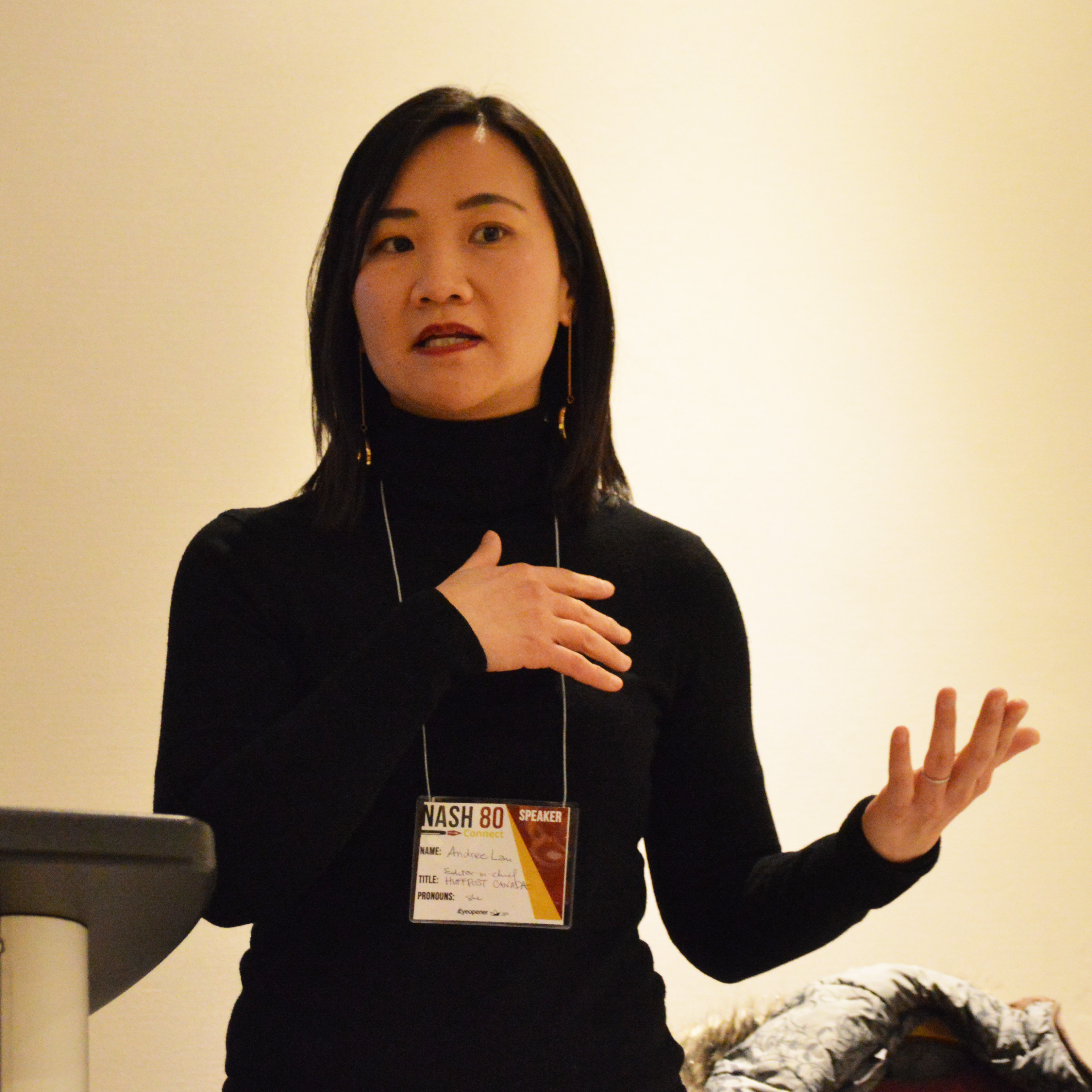Andree Lau on increasing diversity in reporting and the newsroom
by Hannah Daley
As newsrooms across the country strive for greater diversity, HuffPost Canada editor-in-chief Andree Lau says there’s a need for a much more nuanced approach than simply “checking the boxes.”
Lau spoke on January 5th at NASH, the annual Canadian student journalism conference.
This year’s conference, NASH 80: Connect, was hosted by the Ryerson Eyeopener and the Canadian University Press and featured dozens of presenters from the journalism industry, including Lau for her talk on diversity in reporting and the newsrooms.
How do we define diversity?
While race and ethnicity are immediately what come to mind, diversity actually means much more, said Lau.
“It’s not as easy as ‘I talked to a black person, I talked to a Chinese person,’ check, I’m done, my story’s diverse,’” she said.
Rather, diversity includes:
- Race, ethnicity
- Gender
- Economic/social position
- Geographic location
- Age
- Ability
- Sexual Orientation
Representation – who you talk to
Lau said in the past she would do streeters where it was easiest — in downtown areas during lunchtime. As a result, most of her streeters ended up being with “white men in suits,” even though they likely weren’t the only representatives of the area.
Now, Lau encourages reporters to go beyond the easiest places for streeters.
“Why do we only go to Chinatown when it’s Chinese New Year? Why can’t we go to Chinatown and ask them about tax cuts, or family benefits? Why don’t we go near transit at 7 p.m. when shifts are ending?” she said.
Pay attention to where you go, the time of day and whom you approach, said Lau. Her advice is to try to approach different people first when doing streeters, rather than sticking to what’s familiar.
When it comes to trying to find a representative for a community, be conscious of what you’re contacting them for. Go to an Imam at a mosque and ask about their specific community, for example, but don’t ask them to speak for all Muslim people. That’s not fair, said Lau.
When you need to talk to experts, try not to automatically call the person who is easiest to reach or who you know will give a great quote.
Instead of calling the same person at the University of Toronto that every other reporter contacted, maybe call someone from Mount Allison in New Brunswick to bring in some geographic diversity. Call a female business analyst. Call ethnic restaurant owners for a story about business ownership even when your story isn’t specifically about ethnicity.
If you make an effort to get diversity in your reporting, Lau said, you’ll often find that your stories are more interesting due to the variety of perspectives.
Your own diversity and other tools
The diversity of your sources is important, but so is your own diversity, said Lau. Use your experiences to enrich your pitches and your work environment. If something doesn’t feel right, try to say something.
“I know it can be hard to speak up, but you’re not complaining, and you’re not speaking for no reason. You’re enriching your story and you’re enriching the coverage of your outlet and that can only be valuable,” she said.
Other suggestions Lau made include:
- Keep a spreadsheet with the names and affiliations of people you come across in person or on the internet so you can reference it later when you need a source.
- Always ask for a source’s pronouns, titles and affiliations. Never assume that you know what they are.
- Use reference guides like the one for reporting on mental health, or from groups like GLAAD to check your reporting.
Remember, said Lau, diversity and representation are important in the newsroom and in your stories. You’re allowed to bring in your own perspectives too.
“Don’t be afraid to bring your point of view to the table.”
Hannah Daley is a fourth-year journalism student at the University of King’s College in Halifax, Nova Scotia. She is the online editor of the Watch, the student magazine at King’s, and a co-president of the King’s journalism society. Find her on Twitter @HannahDaley.




